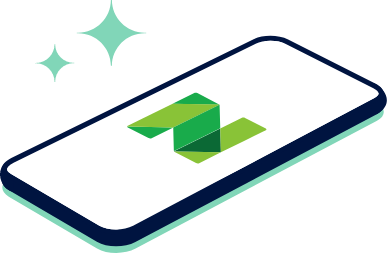Why a 401(k) Rollover to an IRA Could Be a Mistake

Many, or all, of the products featured on this page are from our advertising partners who compensate us when you take certain actions on our website or click to take an action on their website. However, this does not influence our evaluations. Our opinions are our own. Here is a list of our partners and here's how we make money.
The investing information provided on this page is for educational purposes only. NerdWallet, Inc. does not offer advisory or brokerage services, nor does it recommend or advise investors to buy or sell particular stocks, securities or other investments.
If you leave a job or retire, you’re often encouraged to roll over your 401(k) or other workplace retirement account into an individual retirement account. That might not be the right move.
Workplace plans have rules that can protect you from subpar investments and advisors who put their own interests ahead of yours. IRA investments can be more expensive, which can result in less money to spend in retirement. Workplace plans also may offer easier access to your money.
IRAs typically offer many more investment options, a fact heavily emphasized by the financial services companies that want your money. Rollovers are big business — the Investment Company Institute, a trade group, reports that households transferred $463 billion from employer-sponsored plans to IRAs in 2017, the latest year for which statistics are available.
But just having more investment choices isn’t necessarily better.
“With a 401(k), your options are typically going to be more limited, but your options are also going to be squarely within your best interest,” says Dylan Bruce, financial services counsel for the Consumer Federation of America, a nonprofit consumer advocacy group.
Stress less. Track more.
See the full picture: savings, debt, investments and more. Smarter money moves start in our app.
Why the fiduciary standard matters
You usually have choices about what to do with your retirement funds when you leave a job, and an IRA rollover is only one way to preserve the money’s tax-deferred status. Other ways include leaving the account where it is (your former employer must allow this if your balance is over $5,000) or rolling the money into a new employer’s retirement plan, if that plan accepts such transfers.
Most workplace retirement plans are covered under the Employee Retirement Income Security Act, which imposes a fiduciary duty on the people and companies overseeing the plans. Fiduciaries are required to operate solely in the interests of the participants and avoid conflicts of interest.
In the past, advisors weren't held to the same standard when recommending IRA rollovers, although that's changing. The U.S. Department of Labor is extending fiduciary coverage to IRA rollovers, recognizing that financial services providers often have a strong economic incentive to recommend them even when they’re not in an investor’s best interest. Bruce calls that “a very good development,” but it won’t happen overnight. Enforcement of the new rules will be rolled out in stages starting next year, Bruce says.
Workplace plans may cost less, offer more
IRAs are sometimes touted as being cheaper than 401(k)s on average, but often that’s not the case. Since 2000, the cost of equity funds inside 401(k)s has dropped substantially, according to the Investment Company Institute. The average expense ratio for stock mutual funds in the U.S. in 2020 was 1.16%, while 401(k) investors paid about one third that amount, or 0.39%, on average. Expense ratios are the annual fees charged for operating and administering the funds.
Fees make a big difference in how much your nest egg can grow. Let’s say you invest $20,000 in a fund with a 1.16% expense ratio that grows an average of 8% each year. After 40 years, you’d have about $282,000. With a 0.39% fee, your balance would be nearly $376,000, or one-third more.
Accessing your money can be harder with an IRA, as well. You can’t borrow money from an IRA for longer than 60 days, or it’s considered a taxable distribution. Any money you withdraw before age 59 1/2 is typically penalized as well as taxed, although the penalty is waived for certain withdrawals, such as for higher education or a first-home purchase.
With 401(k)s, by contrast, you can begin withdrawing money at age 55 without penalties if you no longer work for the company offering the plan. If you transfer an old 401(k) account to a new employer’s plan, you typically can borrow up to half of your total vested balance or $50,000, whichever is less, and pay the money back over five years.
Furthermore, your 401(k) is also generally protected from creditors. Protection for IRAs varies based on state law.
When a rollover makes sense
Many people don’t want to leave money behind at their previous employer, and a rollover is a much better option than cashing out. A rollover also could be prudent if you don’t have access to a low-cost 401(k), you want to consolidate multiple retirement accounts, your investment options are too limited or the advisor recommending the rollover is a fiduciary (and willing to put that in writing).
It’s essential to investigate all your options, though, before deciding an IRA rollover is the right one. This is, after all, money you hope will sustain you for many years in retirement so it’s important to choose wisely.
“It's probably going to be for most folks one of the most important financial decisions of their lives,” Bruce says.
This article was written by NerdWallet and was originally published by The Associated Press.
Article sources
NerdWallet writers are subject matter authorities who use primary,
trustworthy sources to inform their work, including peer-reviewed
studies, government websites, academic research and interviews with
industry experts. All content is fact-checked for accuracy, timeliness
and relevance. You can learn more about NerdWallet's high
standards for journalism by reading our
editorial guidelines.
Related articles







